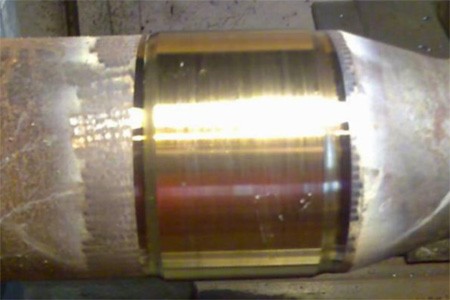- Working Principle of Wear-Resistant Coatings The wear-resistant coating on the drill rod joint acts as an isolation band, applied circumferentially with specific width and thickness. This coating prevents direct contact between the outer wall of the drill rod joint and the casing or well wall, thereby protecting both from significant wear. Given the complex operational conditions, the performance requirements for these coatings are rigorous, demanding both high abrasion resistance and suitable anti-friction properties. The optimal performance of wear-resistant coatings hinges on a balance between these two characteristics. Understanding the functional relationships among key technical indicators and the friction coefficient is essential for advancing the performance of welding materials used in wear-resistant coatings.
- Factors Influencing Performance The performance of wear-resistant coatings is affected by several factors, which can be categorized into three main areas:
2.1 Impact of Load Forces During drilling, any factor that increases the contact force between the drill rod joint and the casing (or well wall) accelerates wear. For example, in sections with pronounced “dogleg” angles, the contact pressure between the joint and the casing wall rises, leading to increased wear on both the coating and the casing.
2.2 Impact of Friction Coefficient Any factors that elevate the friction coefficient between the joint and the casing inner wall can intensify wear. Inadequate lubrication types or quantities, higher rotary table speeds, and extreme temperature conditions can all exacerbate wear.
2.3 Impact of Material Characteristics of Coatings and Casing (or Well Wall) According to the “adsorption film” theory in tribology, forming an adsorption film between the drill rod steel and rock is challenging, causing the friction coefficient to primarily depend on the surface characteristics of the materials involved. These characteristics tend to be stable and less affected by load. Conversely, the friction pair formed between the drill rod and casing steel can more readily develop an adsorption film. When a positive pressure is applied, the gradual destruction of this film increases the significance of the surface characteristics in determining the friction coefficient, making it more sensitive to load variations. Any material characteristics that elevate the friction coefficient will further accelerate wear.
In summary, the factors influencing the performance of wear-resistant coatings can be divided into external factors (load forces and friction coefficients) and an internal factor (material characteristics). The latter serves as the core influence, reflecting the predetermined material properties of the casing (or well wall) and the variable nature of the wear-resistant coating. Ultimately, changes in the coating’s properties depend on the composition, structure, and performance of the overlay welding materials, alongside the rigorous application of the welding processes.
Post time: Nov-07-2024





